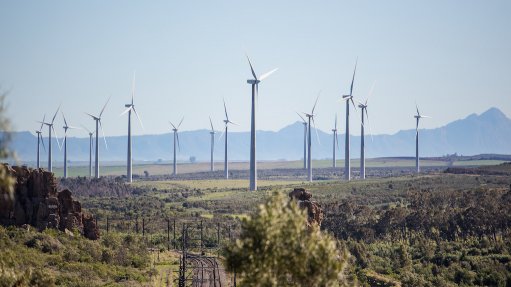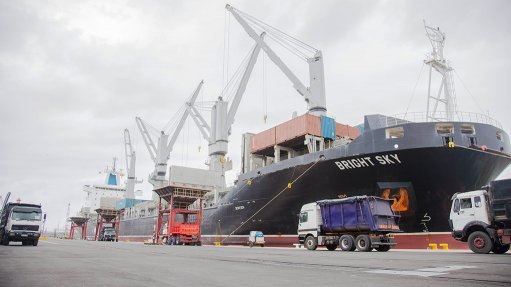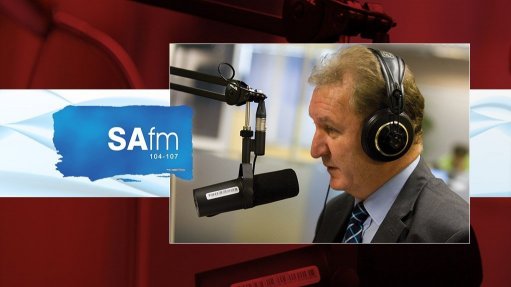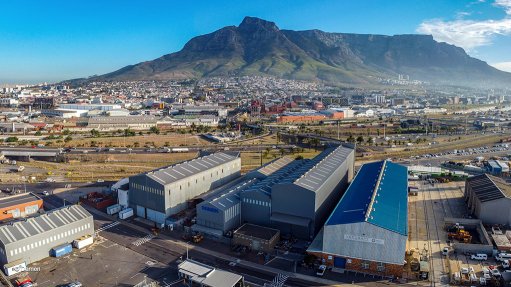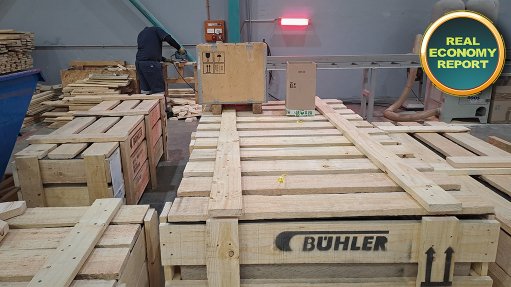South Africa 2011 satellite imagery mosaic now available
The Earth Observation division of the South African National Space Agency (Sansa) recently launched the latest edition of its mosaic of satellite imagery of the whole of South Africa, using data from the Spot 5 earth observation satellite. Assembled from imagery taken and collected from January 24 to December 20 last year, it is known as the Spot 5 Mosaic 2011.
“The mosaic can be used for many purposes,” highlights Sansa Earth Observation production manager Natalie Diemer, “[like] housing and urban planning, agriculture (especially determining crop yields), water and, particu-larly, dam monitoring, environmental monitor-ing, forestry monitoring, and so on.”
More than 1 000 images were acquired over eleven months, most during winter when cloud cover is minimal over most of the country. “Cloud cover is always a problem,” she observes. Of these, 952 were used in the creation of the mosaic. These were composed of 476 multispectral (colour) images with a resolution of 10 m and 476 panchromatic (black and white) images with a resolution of 2.5 m. These were combined to create 476 2.5 m resolution colour scenes, which were “mosaicked” to create the image of the entire country. This was then divided into squares, called tiles, to produce the final product.
The merging of the two types of image to form the scene is done automatically. “But, sometimes, there is a glitch in the process,” says Diemer. “So every scene needs to be checked manually. My team does this.” The processing of the imagery started while the collection process was still under way. “The making of the mosaic is quite a big task,” she avers.
The processing of the imagery to what is called Level 3 B – the level required for the mosaic – took eight months, and involved orthorectification (positioning and elimination of distortion in the images), pansharpening (transforming lower resolution colour images into higher resolution colour images), true colour conversion, colour balancing, manual editing to reduce cloud cover and eliminate “no data areas”. The entire mosaic is supplied on a single disc, and is available in different formats – UTM, tiff (zipped); geographic, tiff (zipped); geographic JP2000 format, compressed; geographic, ecw format (zipped) and degraded to 10 m resolution, geographic, tiff (zipped).
“We send out about 30 discs,” she reports. Each province gets one, with the data for its territory; others go to the Presidency, govern-ment departments and government agencies such as South African National Parks.
In addition, Sansa Earth Observation sup-plies discs containing each scene separately and providing both the final scene and the two images that make it up. Each set comprises two discs. These are used for scientific research and are supplied, for example, to universities. About 15 such sets of discs are issued. Most images on these discs have been processed to Level 3 A quality, a process which took six months and included orthorectification, pansharpening and “lots of checking”.
The first Spot 5 mosaic of the country was compiled in 2006. “In 2006, the mosaic of the country had a lot of wide-angled images,” states Diemer. “[The year] 2011 was the first time that pretty much all the images were taken at a very narrow angle.” The narrower the angle, the better the positional detail revealed.
However, while, with the wide-angle images, the entire country was covered, with the narrow angle images, there are six small parts of the country that have not been covered. All of these are very small, indeed, amounting to gaps of less than 200 m2 in the coverage – the equivalent of a cloud. However, this will not be a problem as Sansa will be able to supply newer imagery of the areas concerned, should it be required.
Spot 5 was launched in 2002 and is operated by European space company Astrium. Spot is a French acronym: Satellite Pour l’Observation de la Terre (Earth observation satellite, in English). In terms of its licence from Astrium, Sansa can only supply the mosaic to government departments, agencies and universities.
Comments
Press Office
Announcements
What's On
Subscribe to improve your user experience...
Option 1 (equivalent of R125 a month):
Receive a weekly copy of Creamer Media's Engineering News & Mining Weekly magazine
(print copy for those in South Africa and e-magazine for those outside of South Africa)
Receive daily email newsletters
Access to full search results
Access archive of magazine back copies
Access to Projects in Progress
Access to ONE Research Report of your choice in PDF format
Option 2 (equivalent of R375 a month):
All benefits from Option 1
PLUS
Access to Creamer Media's Research Channel Africa for ALL Research Reports, in PDF format, on various industrial and mining sectors
including Electricity; Water; Energy Transition; Hydrogen; Roads, Rail and Ports; Coal; Gold; Platinum; Battery Metals; etc.
Already a subscriber?
Forgotten your password?
Receive weekly copy of Creamer Media's Engineering News & Mining Weekly magazine (print copy for those in South Africa and e-magazine for those outside of South Africa)
➕
Recieve daily email newsletters
➕
Access to full search results
➕
Access archive of magazine back copies
➕
Access to Projects in Progress
➕
Access to ONE Research Report of your choice in PDF format
RESEARCH CHANNEL AFRICA
R4500 (equivalent of R375 a month)
SUBSCRIBEAll benefits from Option 1
➕
Access to Creamer Media's Research Channel Africa for ALL Research Reports on various industrial and mining sectors, in PDF format, including on:
Electricity
➕
Water
➕
Energy Transition
➕
Hydrogen
➕
Roads, Rail and Ports
➕
Coal
➕
Gold
➕
Platinum
➕
Battery Metals
➕
etc.
Receive all benefits from Option 1 or Option 2 delivered to numerous people at your company
➕
Multiple User names and Passwords for simultaneous log-ins
➕
Intranet integration access to all in your organisation






